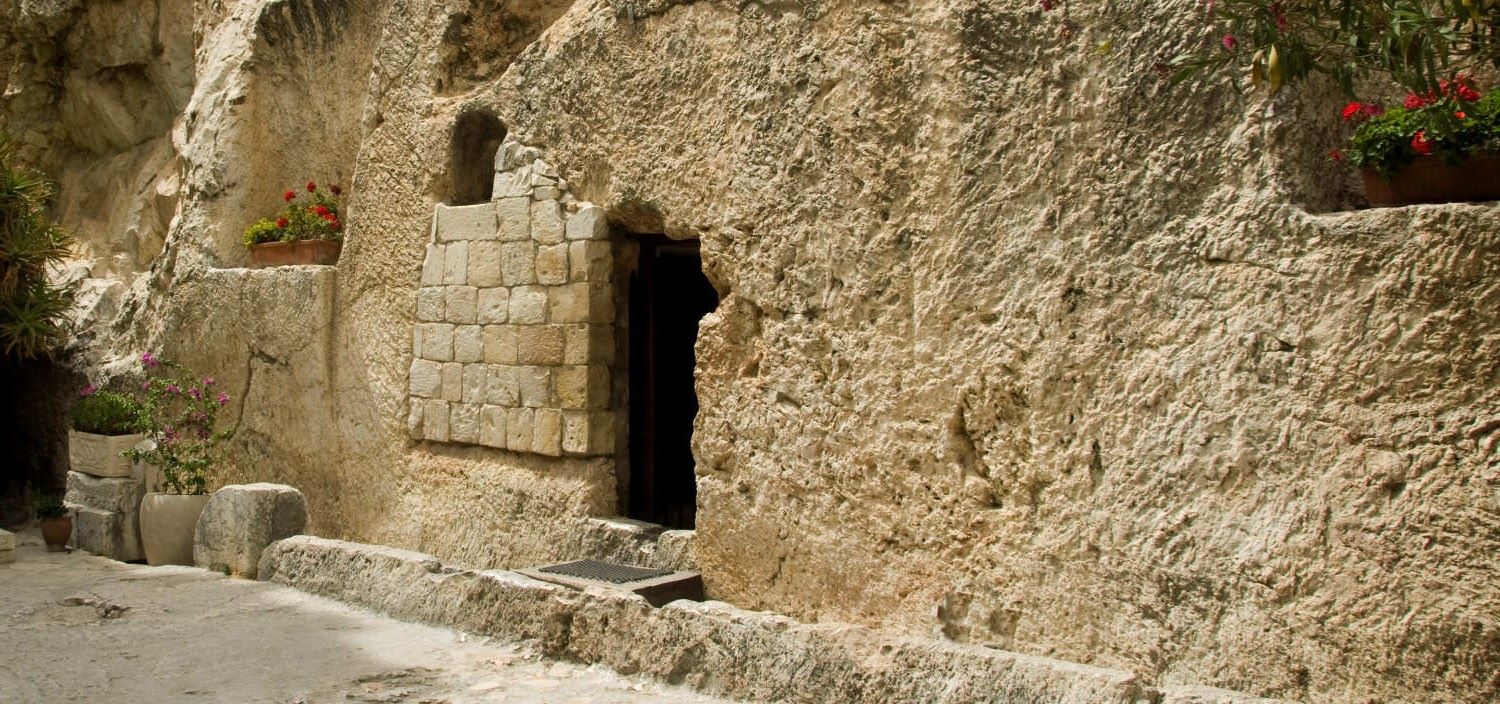
Did you know that the tomb of Jesus is one of the most intriguing historical sites in the world? Nestled in the heart of Jerusalem, this sacred location has fascinated scholars, pilgrims, and tourists alike for centuries. But what makes it so special? For starters, it's believed to be the very place where Jesus was buried and resurrected. This tomb has layers of history, mystery, and religious significance that captivate everyone who visits. From its ancient origins to its modern-day preservation, the tomb offers a unique glimpse into the past. Ready to uncover some amazing facts about this iconic site? Let's dive in!
The Mystery of Jesus' Tomb
The tomb of Jesus has fascinated historians, archaeologists, and believers for centuries. This sacred site holds many secrets and intriguing details. Let's explore some captivating facts about Jesus' tomb.
Location and Discovery
The location and discovery of Jesus' tomb have sparked numerous debates and studies. Here are some key points about its whereabouts and how it was found.
- The Church of the Holy Sepulchre: The most widely accepted site of Jesus' tomb is within the Church of the Holy Sepulchre in Jerusalem. This church is a major pilgrimage destination for Christians worldwide.
- Discovery by Helena: In 326 AD, Helena, mother of Roman Emperor Constantine, is credited with discovering the tomb. She identified the site during her pilgrimage to Jerusalem.
- Golgotha: The tomb is believed to be near Golgotha, the site of Jesus' crucifixion. Golgotha means "place of the skull" in Aramaic.
- Garden Tomb: Another proposed site is the Garden Tomb, discovered in the 19th century. Some believe this location aligns more closely with biblical descriptions.
Architectural Features
The tomb's architecture provides insight into burial practices and the historical context of Jesus' time. Here are some notable features.
- Rock-Cut Tomb: Jesus' tomb is a rock-cut tomb, a common burial method for wealthy Jews in the 1st century.
- Rolling Stone Door: The entrance was sealed with a large rolling stone, which was typical for tombs of that era.
- Inner Chamber: The tomb has an inner chamber where Jesus' body was laid. This chamber is carved out of the rock.
- Loculus: The burial niche, or loculus, is where Jesus' body was placed. It is a horizontal shelf cut into the rock.
Historical and Religious Significance
The tomb holds immense historical and religious significance, influencing Christian beliefs and traditions.
- Resurrection Site: Christians believe Jesus rose from the dead at this site, making it central to the faith.
- Pilgrimage Destination: Millions of pilgrims visit the tomb annually, seeking spiritual connection and reflection.
- Holy Fire Ceremony: The Holy Fire ceremony, held at the Church of the Holy Sepulchre, symbolizes Jesus' resurrection. It occurs every year on Holy Saturday.
- Crusader Influence: During the Crusades, the tomb and surrounding church were heavily fortified and modified by Crusaders.
Archaeological Findings
Archaeological excavations have revealed fascinating details about the tomb and its surroundings.
- Edicule: The Edicule, a small shrine within the Church of the Holy Sepulchre, encloses the tomb. It has been rebuilt several times due to damage.
- Ancient Graffiti: Early Christian graffiti found near the tomb includes inscriptions like "Jesus, son of God."
- Byzantine Modifications: Byzantine-era modifications to the tomb include the addition of a marble slab over the burial bed.
- Modern Restoration: Recent restorations have uncovered original rock surfaces and provided new insights into the tomb's history.
Controversies and Theories
The tomb's authenticity and location have been subjects of debate and alternative theories.
- Talpiot Tomb: The Talpiot Tomb, discovered in 1980, sparked controversy with claims it could be Jesus' family tomb. Most scholars reject this theory.
- James Ossuary: The James Ossuary, a bone box inscribed with "James, son of Joseph, brother of Jesus," has been debated for its authenticity and connection to Jesus' family.
- Skeptical Views: Some scholars argue there is insufficient evidence to conclusively identify Jesus' tomb.
Cultural Impact
The tomb's influence extends beyond religious circles, impacting art, literature, and popular culture.
- Artistic Depictions: The tomb has been depicted in countless artworks, from medieval paintings to modern films.
- Literary References: Numerous literary works reference the tomb, exploring themes of faith, resurrection, and mystery.
- Tourism: The tomb is a major tourist attraction, drawing visitors from diverse backgrounds and beliefs.
Preservation Efforts
Preserving the tomb and its surroundings is a continuous effort involving various stakeholders.
- UNESCO Heritage Site: The Church of the Holy Sepulchre is part of a UNESCO World Heritage Site, recognizing its cultural and historical importance.
- International Collaboration: Preservation efforts involve collaboration between religious communities, archaeologists, and conservationists.
- Structural Challenges: The tomb and church face structural challenges due to age, environmental factors, and previous modifications.
- Funding and Support: Preservation projects receive funding from governments, religious organizations, and private donors.
Modern-Day Relevance
The tomb remains relevant in contemporary discussions about faith, history, and archaeology.
- Interfaith Dialogue: The tomb serves as a focal point for interfaith dialogue, promoting understanding and cooperation among different religious groups.
- Scientific Research: Ongoing scientific research continues to uncover new information about the tomb and its historical context.
- Media Coverage: The tomb frequently features in media coverage, documentaries, and academic studies, keeping it in the public eye.
- Educational Programs: Educational programs and tours help inform visitors about the tomb's history and significance.
Personal Reflections
Visiting the tomb can be a profound personal experience, offering moments of reflection and spiritual growth.
- Spiritual Connection: Many visitors report feeling a deep spiritual connection when visiting the tomb.
- Historical Awareness: The tomb provides a tangible link to historical events, enhancing visitors' understanding of the past.
- Cultural Appreciation: Experiencing the tomb's cultural and religious significance fosters appreciation for diverse traditions and beliefs.
- Inspiration: The tomb inspires countless individuals, motivating them to explore their faith and seek deeper meaning in their lives.
Final Thoughts on Jesus' Tomb
Jesus' tomb holds a wealth of historical and spiritual significance. From its discovery to the ongoing debates about its authenticity, this site continues to captivate scholars and believers alike. The Church of the Holy Sepulchre stands as a testament to centuries of faith and pilgrimage. Whether you're drawn by religious devotion or a curiosity about history, the tomb offers a unique glimpse into the past. Remember, the facts surrounding Jesus' tomb are as complex as they are fascinating. Each visit or study brings new insights and questions. So, next time you think about ancient mysteries, consider the layers of history and faith that make Jesus' tomb a lasting symbol.
Was this page helpful?
Our commitment to delivering trustworthy and engaging content is at the heart of what we do. Each fact on our site is contributed by real users like you, bringing a wealth of diverse insights and information. To ensure the highest standards of accuracy and reliability, our dedicated editors meticulously review each submission. This process guarantees that the facts we share are not only fascinating but also credible. Trust in our commitment to quality and authenticity as you explore and learn with us.


